This post may contain affiliate links that at no additional cost to you, I may earn a small commission.
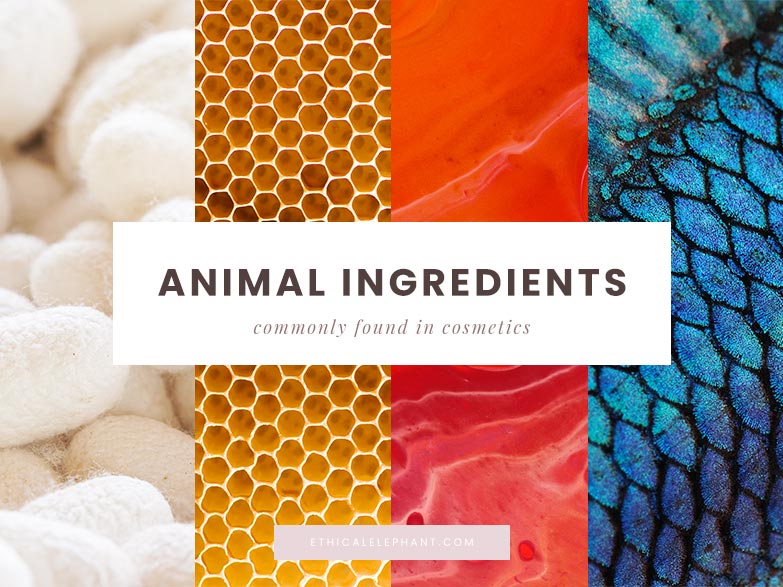
Do you know what’s in your makeup and skincare products? I’m sure crushed-up bugs, shark liver oil, and fish scales isn’t what you had in mind as you read the list of ingredients in your classic red lipstick, anti-aging eye creams, or shimmery nail polish.
Animal-derived ingredients and by-products have found their way into our cosmetics, skincare and hair products to serve some form or functional purpose. Although animal ingredients are oftentimes classified as being “naturally-derived” and “derived in a manner that doesn’t harm animals” but there are minimal to non-existent animal welfare policies protecting animals that are reared and used to manufacture ingredients for human use.
These animal ingredients are used and added into our cosmetics as an emollient, emulsifier, soothing agent, colorant, skin and hair conditioner, and many other purposes.
Luckily, there are some great vegetable and synthetic alternatives available now so cosmetic manufacturers can do without the animal cruelty ingredients without compromising on quality or product performance.
Animal Ingredients in Cosmetics
Here are some of the most common (and sometimes hidden) animal-derived ingredients and by-products that are lurking in our cosmetics today. I’ve been a vegan beauty advocate for the past 7 years and my go-to resources are the book, Veganissimo A to Z: A Comprehensive Guide to Identifying and Avoiding Ingredients of Animal Origin in Everyday Product and the online searchable database, Double Check Vegan.
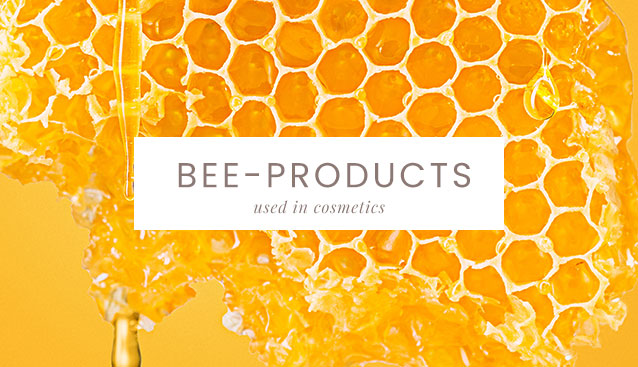
Bee-Products
Beeswax (
Honey (
Propolis (bee glue) – Mixture of tree resins and digestive juices of bees. Used by bees as a building material for sealing small cracks and reinforcing the hive. Propolis is used in cosmetics as an antiseborrheic, moisturizer, smoothing agent, or as an antimicrobial agent in toothpaste, shampoos, deodorants, etc.
Bee Pollen – Powder produced by the flowers of seed-bearing plants for reproductive purposes (transmission from plant to plant either air-borne or carried by animals). Gathered by bees and used for feeding their larvae. Obtained by humans using pollen traps (meshed wire devices in the beehive entrance that strip the pollen off the legs of the bees returning home; legs and wings can be torn off in the process). Bee Pollen is used in cosmetics as a skin conditioner.
Royal Jelly – Secretion from the glands of worker bees. Used for feeding the larvae – especially the queen larvae – of a bee colony. Obtained by specialized beekeepers, who repeatedly remove the queens from the hives and replace them with new queen larvae, for whom royal jelly is produced. The continuous replacement of the larvae and removal of the jelly stimulates an unnaturally constant production. Royal Jelly is used as a skin conditioner in cosmetics.
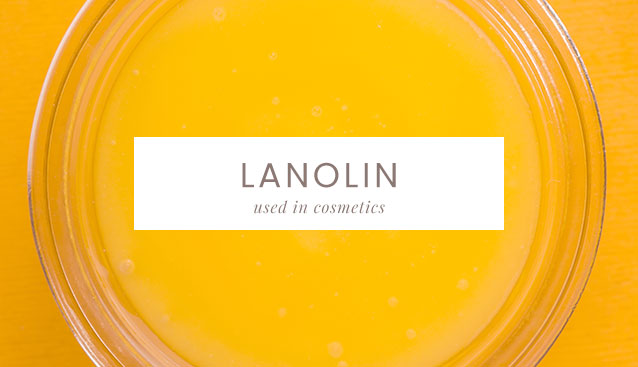
Lanolin
Lanolin (wool wax) – Secretion of the sebaceous glands of sheep. Is washed out of the wool of shorn or slaughtered sheep and purified. Lanolin is used in cosmetics as an antistatic, emollient, hair and skin conditioner, surfactant and carrier.
C10-30 Cholesterol/Lanosterol Esters – Fatty acid compound of cholesterol and
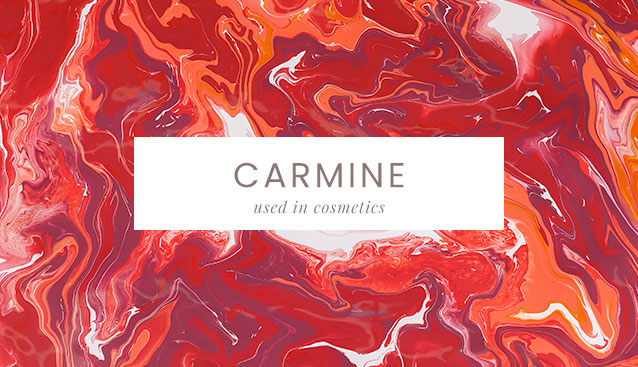
Carmine
Carmine (CI 75470) – Red dye from crushed female cochineal scale insects. More than 150,000 insects may be required for 1kg of the dye. Used as a colorant in cosmetics and foods. (Also labeled as carminic acid, cochineal, crimson lake, E 120)
Shellac (E 904, Gum Lac) – Dark brown resin from the excretions of lac scale insects, collected from the branches the insects live on. Emollient, film forming agent, viscosity controlling agent, and hair fixatives in cosmetics. Used in nail polish.
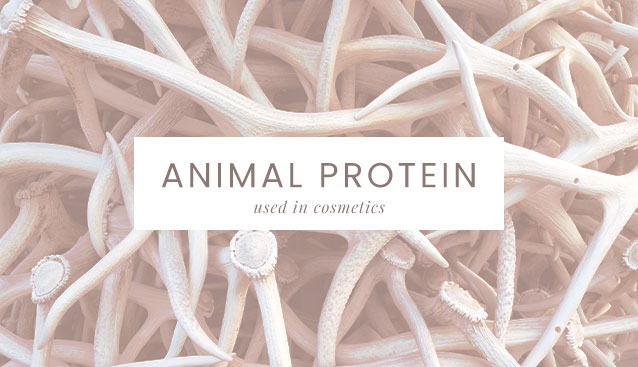
Animal Proteins & Vitamins
Keratin – Protein derived from ground horns, hooves, claws, nails, hair, scales and feathers of diverse vertebrates. Keratin is used in cosmetics as a hair and skin conditioner.
Hydrolyzed Keratin – Chemically altered keratin. Used as an antistatic, film-forming agent, humectant, skin and hair conditioner in cosmetics.
Collagen – A fibrous protein in the connective tissue of vertebrates. Various forms are present in bone, teeth, cartilage, ligaments, sinews
Processed collagen is also used as a cosmetic ingredient, especially collagen amino acids, and hydrolyzed collagen and its derivatives. Collagen is also used in cosmetic surgery in antiwrinkle injections.
Elastin – An elastic fibrous protein, naturally present in the connective tissue of animals. Obtained from elastic “slaughterhouse waste” rich in connective tissue, such as the neck ligaments and the aortae (largest arteries) of cattle. Smoothing agent and skin conditioner in cosmetics.
Biotin – Water-soluble vitamin that
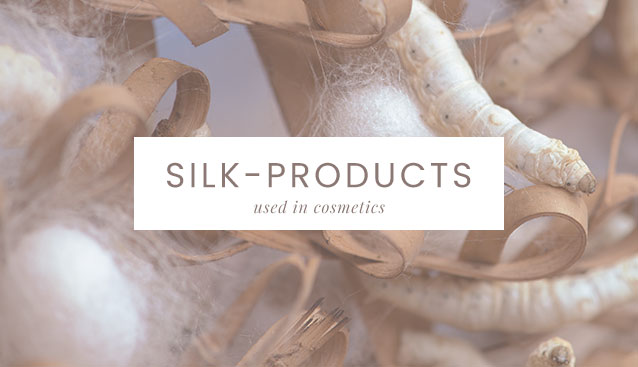
Silk
Silk Amino Acids – Water-soluble glycoprotein extracted from raw silk. It is used as an additive in skin and hair care products due to its high levels of serine which has excellent moisture preservation characteristics. Humectant, hair, and skin conditioner in cosmetics.
Sericin (silk glue) – The sticky outer layer of silk. Antistatic, skin and hair conditioner and smoothing agent in cosmetics.
Hydrolyzed Silk – Chemically altered proteins from silk. Antistatic, humectant, hair and skin conditioner in cosmetics.
Sodium Lauroyl Hydrolyzed Silk – Chemically altered silk. Antistatic and hair conditioner in cosmetics.
Silk Powder – Finely ground silk. Humectant, skin and hair conditioner, and smoothing agent in cosmetics. (Also labeled as Serica Powder)
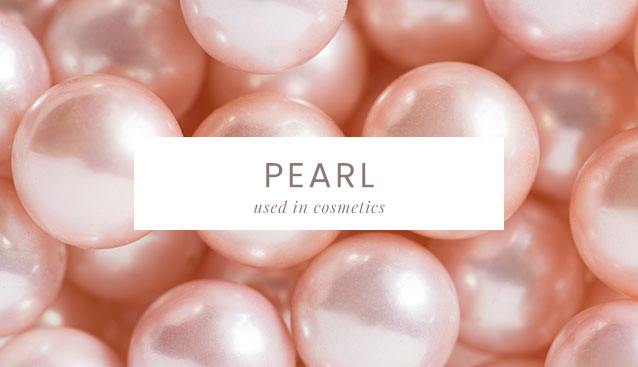
Pearl
Pearl – Hard, often round deposits of
Hydrolyzed Pearl – Chemically altered pearls. Used as a skin conditioner in cosmetics.
Pearl Powder – Finely crushed pearl used in cosmetics to help improve skin appearance.
Hydrolyzed Conchiolin Protein – Chemically altered proteins from pearl oysters. Skin and hair conditioner in cosmetics.
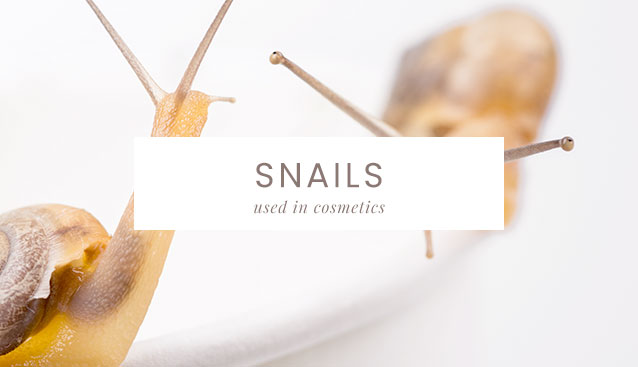
Snails
Snail Mucin – Extract from the slime of snails of the species Helix aspersa Müller. The snail slime is collected from living animals on snail farms and processed for use as a cosmetics ingredient. Snail mucin claims to improve skin elasticity and scar healing.
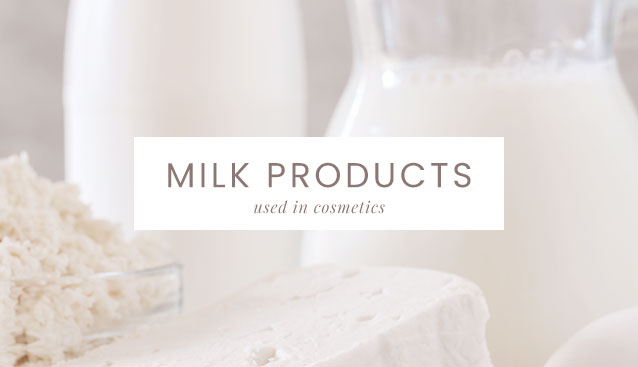
Milk
Lactoferrin – Iron-binding protein from milk. Commonly used in cosmetics as a skin and hair conditioner.
Lactose –
Hydrolyzed Milk Protein – Chemically altered milk protein. Used in cosmetics as an antistatic, skin and hair conditioner.
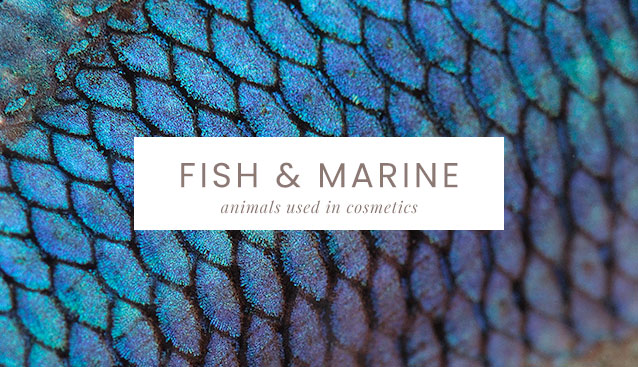
Fish & Other Marine Animals
Squalene – can be from killed animals or vegetable. Occurs naturally (along with squalane) in fish liver oil and many vegetable oils. Obtained from shark liver oil or olive oil. Antistatic, emollient, hair conditioner and refatting substance in cosmetics.
Guanine (CI 75170) – can be from killed animals or synthetic. The pearlescent part of fish scales. Industrially manufactured from the scales and skin of fish. Can also be produced from uric acid. Opacifier and
Glucosamine – from killed animals. Occurs naturally in the exoskeletons of insects and crustaceans. Obtained industrially from the shells of crabs and shrimps. Hair and skin conditioner in cosmetics.
Chondroitin – Obtained from the connective tissue of killed animals.







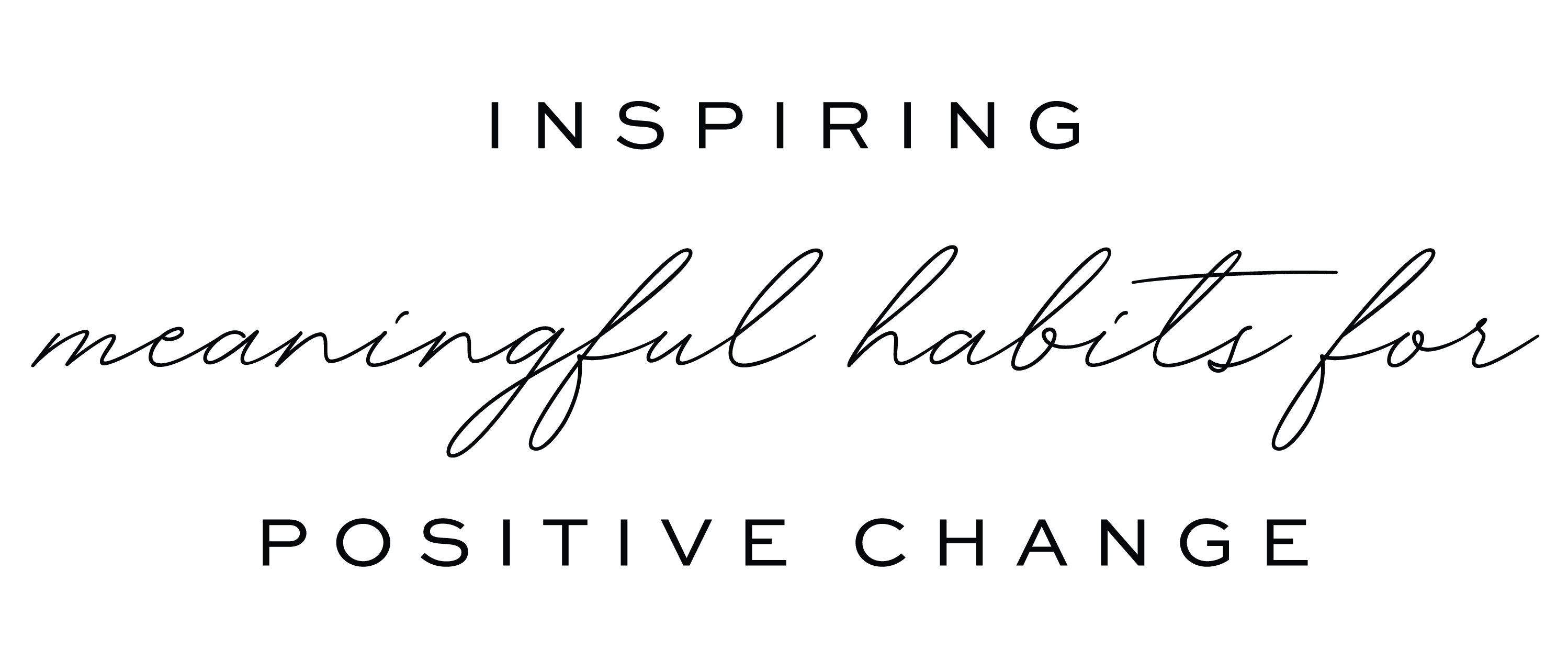
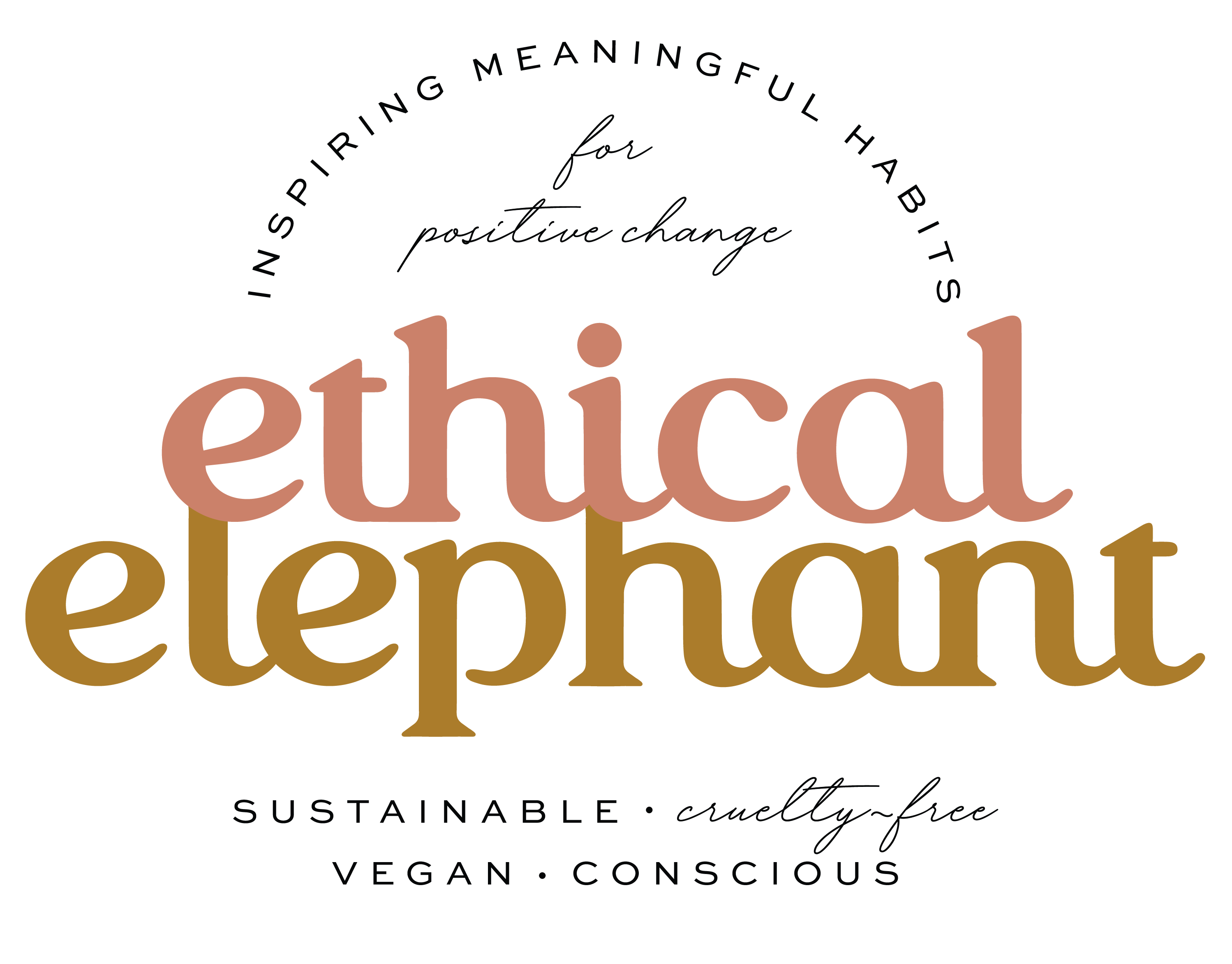
1 thought on “These Common Animal-Derived Ingredients Used in Cosmetics are Not Vegan”
I can’t believe what l read. How horrible that any human can obtain such cruelty to animals l spends researching what l buy,and sometimes wonder if l did the right choice. I purchased hask shampoo and conditioner containing kerotene now l have to them away. I guess my research was not as good as l thought.
It was a very informative article you wrote l learned a lot.
Thank you